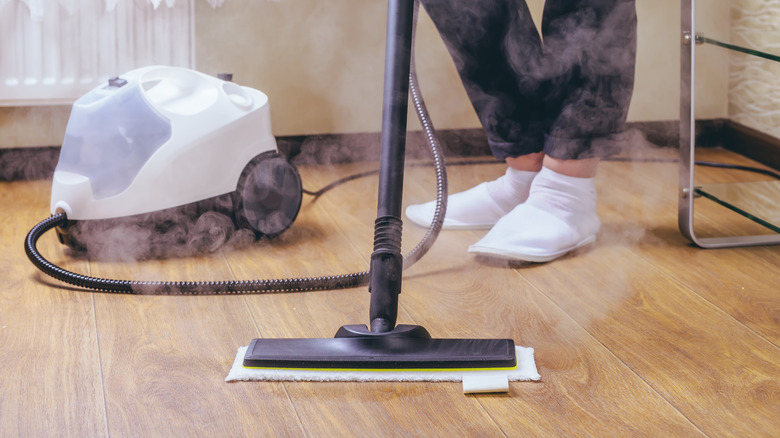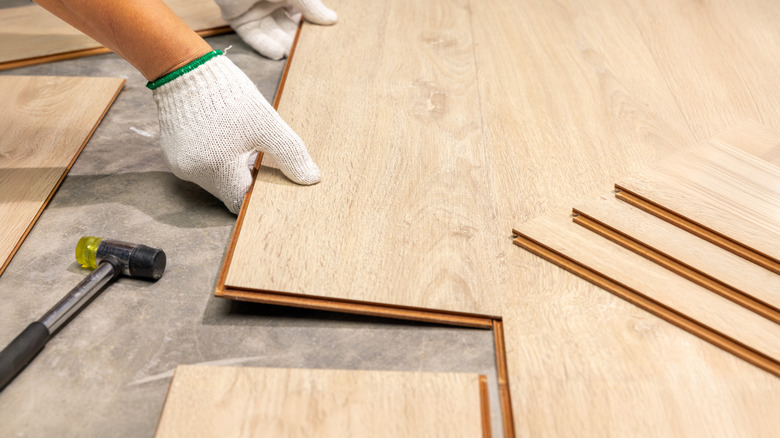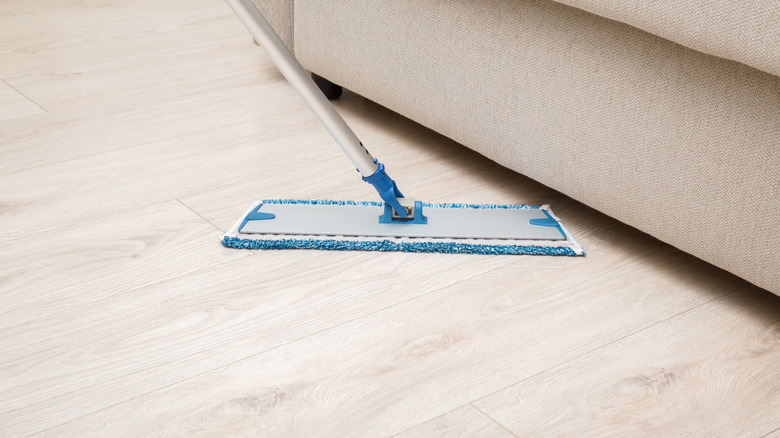Why You Should Think Twice Before Using A Steam Mop On Laminate Floors
Considering how important they are to the overall look and feel of your home, constantly looking for ways to maintain them and keep them clean for longer is expected. This is why you probably already own a steam mop or are thinking of getting one. It's easy to categorize steam mops as one of the genius cleaning tools you absolutely need for your home. What's not to like? They're eco-friendly, versatile, and great at both cleaning and sanitizing. However, if your home has laminate flooring, you might want to rethink using these mops to clean your floors. Steam mops and laminate flooring aren't exactly a match made in cleaning heaven due to the negative impacts of moisture and heat on the floorboards and overall floor structure.
Unfortunately, what makes these mops great for other floors is the reason why they are not so good for laminate flooring. A steam mop uses steam to rid your floors of dirt and bacteria. However, laminate floors – although somewhat moisture-resistant – aren't waterproof. Using steam mops on them increases the risk of steam getting between and into the floorboards, which causes water damage. The scarier fact is that fixing water damage issues on this kind of floor is not a question of simple repairs. It always requires either replacing the damaged boards if there are just one or two or replacing the entire floor if the problem is extensive.
How steam mops damage laminate flooring
Laminate floors typically contain four layers: the back, core, design, and wear layers. The back layer gives structural stability and acts as a moisture barrier, while the core is the most important layer and contains high-density fiberboard. The design and wear layers are decorative and protective, respectively. During manufacturing, these layers are pressed under high temperatures and pressure with melamine resin as a bonding agent.
The high-density fiberboard in the core is moisture-resistant, meaning that it won't soak moisture from the air. However, this doesn't mean it is waterproof, as continued contact with steam could cause the fiberboard to soak up water and lead to swelling and warping. The heat from the mops could also break down the protective wear layer, causing it to peel off and making it easier for more moisture to get into your boards. Finally, the moisture that creeps into your laminate floor can weaken the resin adhesive that holds the layers together. The combined effect of the weakened adhesive and the swollen fiberboards will easily distort and separate the floor's layers. This domino effect of steam mops eventually ends in laminate floorboards lifting off the subfloor and pushing up against each other.
The right way to mop your laminate floors
Consider other cleaning options to prevent your laminate flooring from lifting. The ideal alternative is a damp mop. Simply dip a microfiber mop into a cleaning solution, wring or spin it until it's nearly dry, then mop. To prevent water from seeping into the floorboards, avoid a dripping mop and pressing the mop on the surface when cleaning. Before mopping, ensure you've swept your floor with a dry microfiber mop, vacuum, or soft-bristled brush to remove loose dirt. Use the hard floor setting or attachment while vacuuming, as it prevents scratches to your floor by using a suction to collect dirt.
If you still insist on using a steam mop on your laminate floor, there is a way to go about it. Just know that this would likely void your floor's warranty, as most laminate floors come with clear manufacturer's instructions against excess moisture and steam cleaning. Still doing this? The first rule is to keep moving. That's the best way to prevent prolonged moisture and steam exposure on a particular spot. Also, put the mop on the lowest steam setting and use an absorbent microfiber pad while mopping. If you plan on steam mopping regularly, adding sealant to your laminate floor will add another layer of protection. Just note that this too could void your warranty, as most laminate floors don't need extra sealing.


